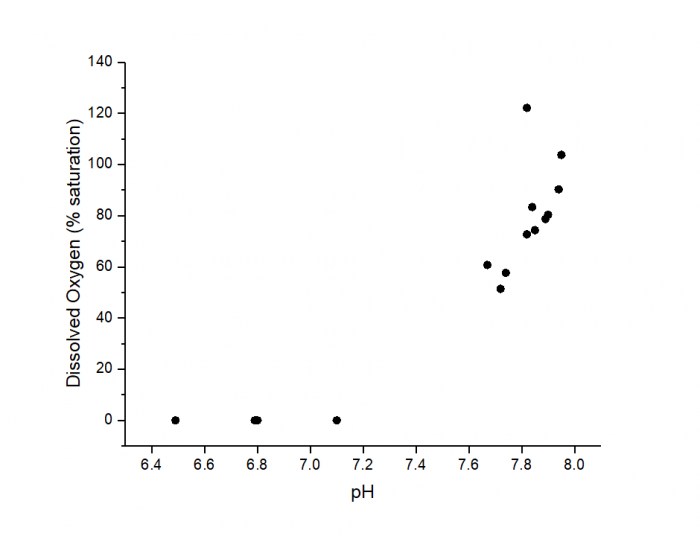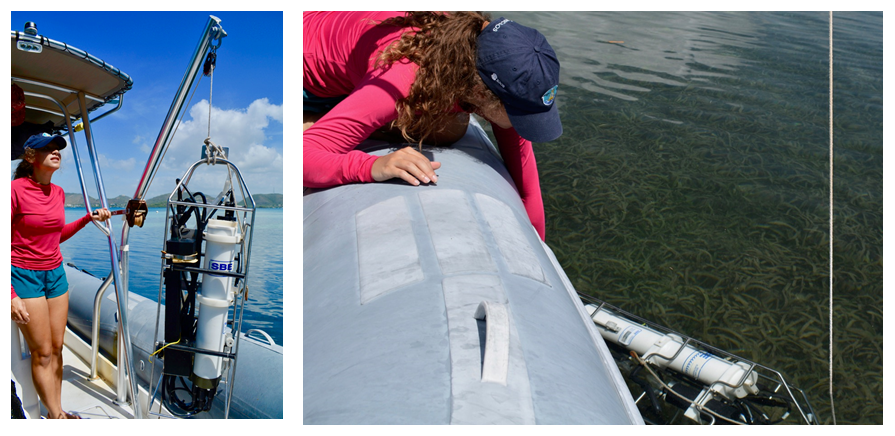Sargassum inundation of recreational beaches has proved to become a persistent problem with a significant impact on the tourism industry and a challenge to entities managing the issue. In a previous news piece, CARICOOS reported evidence provided by satellite data that indicates it has also caused significant damage to mangroves and seagrasses.
CARICOOS is also looking into a much less evident impact. As wind and waves bring massive quantities of Sargasso to the seaward edge of mangrove forests and reefs, it frequently becomes trapped there and starts being decomposed by bacteria.
A project where CARICOOS Research Assistant and UPRM DMS’s graduate student Priscilla Molina plays a major role is focused on assessing the role of Sargasso bacterial decomposition in exhausting the oxygen in the water and potentially increasing ocean acidification.
While oxygen is essential for many organisms that cannot move out of the impacted zone, higher acidification levels can challenge the capacity of “calcifying” organisms such as corals and shellfish to grow. Preliminary results indicate that both negative outcomes do occur and are particularly persistent.




